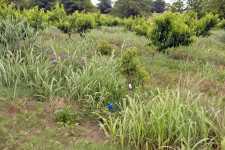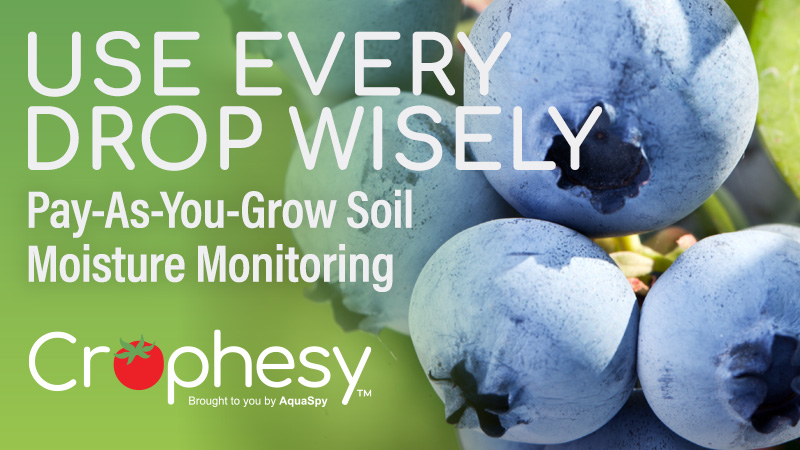Weeds In Stone Fruit: We Love To Hate Them!

Elimination and/or management of uninvited weed species in your orchard seems like a never-ending exercise, doesn’t it? The cost of time and money is real, and significant economic losses can result if this part of your orchard management program is neglected. But, you may ask, is it really that big of a deal?
Weeds are strong competitors with your trees for water and nutrients. During years one and two in a new orchard, for example, most peach growers won’t crop their trees, so that they can “grow a tree” and develop a good scaffold system and canopy for fruit bearing beginning in year three. For young trees, high weed pressure can stunt tree growth and significantly limit early cropping. For mature, fruiting trees, weeds can adversely impact fruit size and harbor insects that can cause direct fruit damage (i.e., stink bugs). Stink bugs will probe unsuspecting peaches with their long, hypodermic needle-like proboscis. As the enzymatic juices they inject into the fruit cause corky tissue to develop, the holes created in the skin provide entry sites for brown rot spores to cause infection. Cat-faced, brown rot infested fruit are unmarketable. Weeds can also be alternate hosts for viruses and ring nematodes.
Before the advent of modern herbicides, peach growers mechanically cultivated the soils in the orchard to remove weeds. This is still practiced in most of China. However, scientific research and observation revealed that this practice resulted in cutting important feeder roots in the top 8 to 12 inches. Nowadays, most growers use a combination of pre- and post-emergent herbicides to reduce weed populations. In some regions of the country, growers prefer to use chemical mowing to create a weed-free, bare orchard floor. In other regions, growers prefer to maintain a weed-free strip down the tree row with a managed vegetative strip down the drive row middle.
Maintaining a chemically mowed, bare orchard floor is advantageous during bloom in the springtime because bare soil retains more orchard heat during the daytime than vegetated soil does. As a result, more heat is available for release at night and in the early morning to keep the orchard temperature warmer and help reduce the risk of frost/freeze damage. A disadvantage of this practice, however, is the fact that soil erosion can occur from wind or rain and make orchard equipment navigation difficult.
In most peach growing regions, herbicide recommendations developed by Extension specialists provide growers with options for the use of registered products at rates and timing that are optimized for success. However, errors can and do often happen. Perhaps a shielded sprayer is recommended to protect the tree trunks of young trees, but one is unavailable. Maybe the herbicide requires rainfall for activation and you don’t get the rain that was predicted. What if the application should have been made with a nozzle creating large droplet size, a surfactant was recommended to be added, and there was to be no wind, but your nozzles made small droplets, you didn’t use the surfactant, and it was windy?
Unfortunately, I have visited several orchards over the years where significant, costly mistakes have been made. Most were avoidable. Some were not. Avoidable situations occurred when growers applied the wrong herbicide or it was applied at the wrong time, at an incorrect rate, they failed to use a surfactant, used incorrect nozzles or pressure, or sprayed when it was windy. Unavoidable situations occurred when nearby fields of Roundup-ready soybeans, cotton, etc. were sprayed with Roundup by airplane and the applicator failed to turn off his nozzles as he banked up over the nearby peach orchard. I have also seen peach orchards where weeds were not managed and they died in the fall but presented a tremendous amount of fuel on the ground that was ignited either by a lightning strike, cigarette butt tossed by a car driver going down the road, or embers from a nearby homeowner burning leaves on a windy fall day. Suffice to say, peach trees don’t like fire.
Winter is a good time to review all aspects of your previous year’s mistakes. It is also a great time to repair and/or recalibrate your sprayers, check and perhaps replace bad nozzles, and review the latest herbicide recommendations from your Extension service. Winter meetings are a great time to swap stories with other growers and hear researchers share the latest science and newest products to help you manage your farm.
To see several real-life photos of problems that can result if weeds are not managed properly, please visit my “Everything About Peaches” website (www.clemson.edu/peach) and go to the Frequently Asked Questions (FAQ) section. Look for the FAQ entitled “Why should weeds in an orchard be managed? What problems can result if they are not managed properly?”










